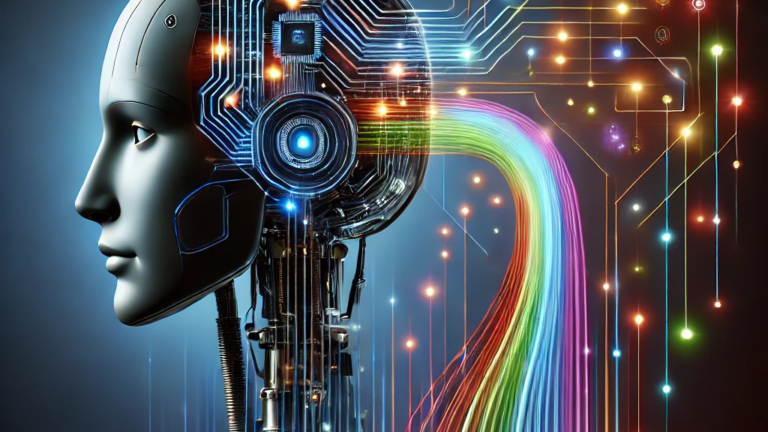Understanding Model Collapse, Original Thought, and the Need for Fresh Data in AI Systems
Artificial intelligence systems have an insatiable appetite for fresh data. To stay sharp, effective and innovative, AIs need to constantly consume new and diverse information. Without a steady stream of fresh data, they risk becoming stale, less accurate, and prone to producing low quality results. This will lead to AI drivel, gibberish and hogwash.
Original Thought
The ability to come up with something new and unique that hasn’t been expressed before is an original thought. Creating something fresh and different to solve a problem, tell a story, or create art, is the kind of thinking that goes beyond copying what is already known. Original thought drives innovation, stimulates creativity, and makes essential progress into the unknown.
Model Collapse
In the simplest terms, model collapse occurs when an artificial intelligence system, such as the large language models powering chatbots, deteriorates over time. This happens because the AI continually learns from its own recycled output rather than from fresh, diverse input. As a result, the system gradually loses its variety and quality.
AI Is Not Original Thinking
So just why then is artificial intelligence not original thinking? AIs process data in clever ways based on patterns learned from the vast amount of data that it has been trained on. AI can appear to create innovative ideas and content, but it doesn’t truly invent ideas from scratch. While AI can generate impressive and useful results, it doesn’t have the spark of creativity that comes with human thought.
Spark of Creativity
The spark of creativity is that sudden and exciting moment when a novel and unique idea pops into our minds. Like a light bulb turning on, there’s a feeling of inspiration and discovery. The spark can happen when creating art, writing a story, solving a problem, or just daydreaming. This special ability to think creatively and originally is what fuels innovation, art, and human progress.
AI Hallucinations
When AIs hallucinate, they generate responses that seem realistic and even correct but are false and nonsensical. AIs can confidently give detailed answers to questions, but those answers are completely made up. This occurs because the AI is designed to generate responses based on predictable patterns it has seen in training data. The AI has no underlying understanding of the information like a human being might. Convincing but incorrect content is just AI gibberish.
The Appearance of Knowledge
Human bullshit is when someone talks confidently enough about something that they know nothing about, pretending to be an expert on a topic without being so. They’ll use fancy words and make things up on the spot which can sound convincing but is not necessarily correct. This can happen anytime and anywhere from casual conversation to professional settings. Perhaps is just human nature to shoot the breeze.
Are AI Hallucinations Just AIs Chatting Us Up?
AI hallucinations aren’t quite the same as that. When AIs hallucinate, they’re generating information using predictions about what’s likely to come next in a sentence based on their training data. AIs aren’t necessarily trying to deceive us, at least not intentionally yet. They just don’t know better, rather their algorithms don’t know better. When humans bullshit each other, there’s an intentionality to it. They are almost always aware that they don’t know the truth about something but choose to speak about it confidently with the intention to impress and mislead. While both AIs and humans present misleading and often false information, it’s not really the same.
A Degree of Separation
AI hallucination and human bullshit are closely related but fundamentally different. There is a single degree of separation between them: intention. AI hallucinations occur because the AI lacks understanding based on training patterns. Humans on the other have a conscious motive to speak without regard to the truth. While the outcome looks similar, AIs have a lack of awareness while humans deliberately intend to mislead or impress.
Recognizing the Difference
Human blustering and AI hallucinations may appear similar on the surface, but they originate from different sources. AIs, despite their impressive capabilities, lack the genuine understanding and intentionality that defines human thought. AIs generate seemingly accurate but sometimes incorrect information due to their reliance upon learned patterns without true understanding. Humans on the other hand, will intentionally deceive or impress thought confident but unfounded assertions. Recognizing the difference between these phenomena will help us appreciate the unique aspects of human creativity and the limitations of artificial intelligence. As AIs are further integrated into our daily lives, it will be essential to understand the distinctions to navigate the complex interplay between humans and artificial intelligences.
In Summary
Understanding the phenomenon of model collapse and the limitation of AI highlights the importance of continuous, diverse data input to maintain the effectiveness and innovation of AI systems. By recognizing the differences between AI’s pattern-based generation and human original thought, we can better appreciate the unique strengths and weaknesses of both. As AI becomes more integrated into our daily lives, this understanding will be crucial in navigating the complex interplay between human creativity and artificial intelligence.
#AI #ArtificialIntelligence #AIHallucinations #ModelCollapse #HumanCreativity #TechInnovation
About the Author
Stephen Howell is a multifaceted expert with a wealth of experience in technology, business management, and development. He is the innovative mind behind the cutting-edge AI powered Kognetiks Chatbot for WordPress plugin. Utilizing the robust capabilities of OpenAI’s API, this conversational chatbot can dramatically enhance your website’s user engagement. Visit Kognetiks Chatbot for WordPress to explore how to elevate your visitors’ experience, and stay connected with his latest advancements and offerings in the WordPress community.



Leave a Reply
You must be logged in to post a comment.